#Spanish playwright
Photo

Federico García Lorca (deceased)
Gender: Male
Sexuality: Gay
DOB: 5 June 1898
RIP: 19 August 1936
Ethnicity: White - Spanish
Occupation: Poet, playwright, theatre director, musician
#Federico García Lorca#lgbt history#gay history#lgbt#lgbtq#male#gay#1898#rip#historical#white#spanish#poet#playwright#writer#director#musician#popular#popular post
185 notes
·
View notes
Note
a lot of mary stans do act like she was henry's "real" heir, certainly to dig at elizabeth, sometimes even edward. it's kind of weird bc they bring in kofa's ancestors to prove mary was more royal and so "deserved" to be queen, like it's more "fitting" that way even when her right to the throne comes from henry so who her maternal family is doesn't matter when it comes to who inherits the english throne.
they don't actually say it aloud, but they try pushing a narrative that since mary was queen after all, that proves everything henry did 1527+ was a waste of time and he should've just accepted mary was his heir and got on with life.
and the fact mary didn't have the best reign irl doesn't count to them bc all the problems she had never would've happened as england would've totally stayed 100% catholic and she'd have had about 20 kids and been the best queen ever.
it's funny bc in this au they don't seem to account for kofa probably still dying before henry meaning he could've easily remarried and had at least one son anyway. and who knows when he would've died so there's no guarantee henry accepting things would mean mary was ever queen.
i find it really hard to read anything about her bc of these people. they say they love mary but seem to prefer their au version over the real thing, like we should celebrate the perfect icon they just know she would've been which never existed, instead of actually studying who she was.
i have little to say except that i largely agree...
yeah, the...the succession act of 1543 in particularly they seem to....selectively.... understand? like, the language of that act is pretty clear. mary and elizabeth were both considered illegitimate under it, and so mary was not set as heir before elizabeth because henry 'secretly' (...lol) considered her 'more legitimate', but because she was the elder. mary also seems to have been the only heir in the sucession act whose inheritance was conditional upon the caveat that she would have to safeguard the new church settlement (although, mary and elizabeth's inheritance had the identical proviso that they could not marry without the consent of council, one which does not seem to have applied to edward vi).
#anon#funnily enough au marian fanfiction has been prevalent since the 17th century#in which a spanish playwright wrote a sprawling epic in which anne had no children (so ; elizabeth totally omitted) and mary was reinstated#as the 'rightful and legitimate' heir by henry in 1536.#it's a shame because i actually do find mary utterly fascinating#but her standom...............let me miiiiiind my business....................#and tbh a good chunk of her biographers. elizabeth just has them shaking in their boots sfdkjfdskl#'elizabeth was UGLY and STUPID and PERVERSE' cool. this is supposed to be a biography about mary; tho....
5 notes
·
View notes
Text
Camp Update No. 3
A third update for Camp NaNoWriMo in July 2022
It’s day 19 and I’m at 40,354 words. I didn’t write much today because I spent much of the morning writing a longer, more involved and time-consuming blog post and then the heatwave that many are struggling with at the moment made me want to do nothing but curl up with an iced coffee and a book.
I am nearing the end of Atawallpa’s story though which feels a little weird to say because I’ve spent…

View On WordPress
#Atahualpa#Atawallpa#Camp NaNoWriMo#Conquistador#Ecuador#Francisco Pizarro#Historical Fiction#History#Huascar#Incan Empire#Latin American History#Machu Picchu#NaNo Projects#NaNoWriMo#Peru#Plays#Playwright#South American History#Spanish History#Tupac Huallpa#Writing#Writing Community
0 notes
Text
There's something I've been meaning to talk about for a while now.
It's the impact of the trans rights movement on the Romani feminist and gay rights movements.
Now, most Romani rights organizations are very disconnected from the Romani masses. They really don't speak for us at all. Most of them get private fundings from the EU and billionaires like Soros (x). That's what leads a lot of Romani feminist groups to supporting the sex trade (x), despite Romani women being among the first victims of sex trafficking in Europe (x).
With the trans rights movement, we've got Romani feminist groups praising Romani men for taking the place of Romani women. Antonella Lerca Duda, a Romanian Romani transwoman, is featured on many Romani feminist posts whose aim is to present empowering Romani women (x) (x). Antonella Lerca Duda is "the first transexual Romani woman to run for mayor in Romania".
German Romani feminist organization RomaniPhen even chose to include his portrait in their post about powerful Romani women - instead of chosing to picture an actual Romani woman (x). Duda also created a "sex work" organization that fights for the decriminalization of prostitution. He's not our sister and he doesn't fight for Romani women. Yet he was even invited to co-write and star in a play from the only female-only Romani theater troup in the world, Giuvlipen, once again taking the job that could have gone to an actual Romani female playwright and to an actual Romani female actress (x).
In Spain, the trans movement is piggybacking on the back of the Romani rights movement. "Trans women" and "Gitanas" are associated in a manner much similar to what the TRA movement is doing in the US by associating "Trans people" and "Black women". Thus Spanish Senator Teresa Ruiz-Sillero recently said that ""Personas LGTBI (en particular trans), inmigrantes, personas gitanas" se considerarán "colectivos vulnerables de atención prioritaria"." ("LGBTI people (trans in particular), immigrants, romani people" will be considered "vulnerable groups to give a priority attention to") (x)
Many tweets from popular TRA Spanish accounts associate Romani women and trans women (I'm only gonna add three examples because this post is already long; you can look up "gitanas + trans" on twitter to judge by yourself):


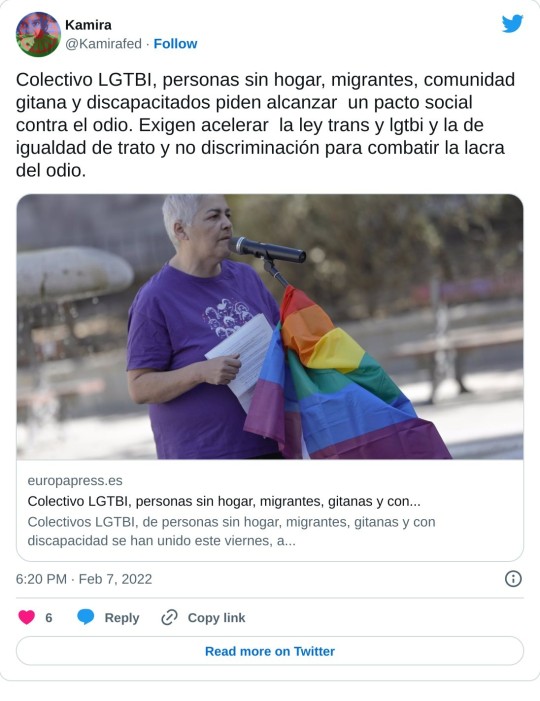
And many Spanish Romani activists and organizations are denouncing TERFs as fascist and fighting for self-ID laws


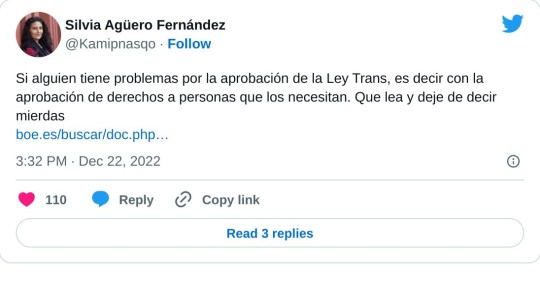
Nevermind the fact that Romani women desperately need sex-segregated spaces considering that Romani women are particularly vulnerable to domestic violence and sexual assaults (x). Nevermind the fact that saying Romani women are not female because we're Romani is inherently racist.
But it's even worse when we think about the Romani gay rights movement. As opposed to many other gay rights movements, the Romani one is very recent. Which means we never got to build up a proper LGB Romani movement detached from "queer theory". We never got a movement only dedicated to SSA Roma, because trans and queer activists are behind all our LGBT groups. Gender rhetoric is deeply embedded in the Romani gay rights movement.
Here's a clip from the ERRC, the largest Romani rights organization in Europe, organizing a workshop on LGBTIQ Roma in the Balkan and in Spain. No lesbian or bi woman is present in this video. There's only one (straight) woman. The person with the longest speaking time is a TIM. This is particularly bad considering Romani orgs have a tendency to ignore Romani women's voices (x).
Ara Art is one of the largest Romani LGBT organization in Europe. On their website, they have interviews with trans Roma. These interviews are deeply sexist and homophobic: here's one in which a gay boy raised in a homophobic family comes out as a trans woman. This story is framed in a positive light.
Romani organizations are repeating the lie that Stonewall was started by "trans women" and are further erasing gay men and lesbians from their own history (x). They publish articles framing LGB Roma's sexuality as "sexual dissidence" (x). By supporting the trans rights movement, orgs like Ververipen, Ara Art and ERRC are supporting the sterilization of LGB Roma. All over Europe, Romani organizations hold conferences to discuss "LGBTIQ rights" (x) and are interviewing Romani TRAs (x), all in order to fight for trans rights (that last link even includes an interview with a biromantic asexual transman lmao). There's no LGB rights movement that exists outside of the gender realm for Roma.


source: Asociacion Gitanas Feministas por la Diversidad (x) and E-Romnja, one of the largest Romani feminist org in Romania (x)
Gadje newspapers are writing articles about "Queer Roma" (x). Gadje academics are writing gender theory thesis about "Queer Roma" (x).
This doesn't help LGB Roma. In my so-called progressive, Western European country, my Romani relatives used to tell me that LGBs were deviant perverts while I was growing up. My local Romani community openly calls for the lynching of LGB Roma. Most European Roma are deeply religious (muslim or christian), sometimes to the point of being fundamentalists. The vast majority of European Roma are working class and don't care about "queer theory".
Yet the associations that are supposed to be fighting for us are reinforcing the idea that LGBs are perverts and that not supporting the homophobic trans ideology makes you a fascist. Since Romani rights groups are all very recent, we never even got the chance to make our own movements before we got swipped into the gender trend.
The trans rights movement is actively harming Romani women, LGB Roma, Romani feminist and Romani gay rights movements.
#roma#gender critical#drop the t#lgb#radical feminists do interact#radical feminists please interact#radical feminists do touch#radical feminists please touch#radfems do touch#radfems please touch#radfems do interact#radfems please interact#radblr#radical feminism#this post is so long and boring i hope it won't flop tho it took me an hour lol
576 notes
·
View notes
Text
Don Juan Triumphant — An analysis of Erik's masterpiece
Warning: i don't speak French and i don't have english editions of PotO, only Portuguese, so i will translate it directly from my text
Gaston Leroux's novel narrates the fact that Erik was producing an Opera of his own with the theme "Don Juan Triumphant". Unfortunately, we never hear it because it's a book, but a few adaptations brought his work to live with different interpretations.
Let's analyze what Leroux intented to write with Erik's character.
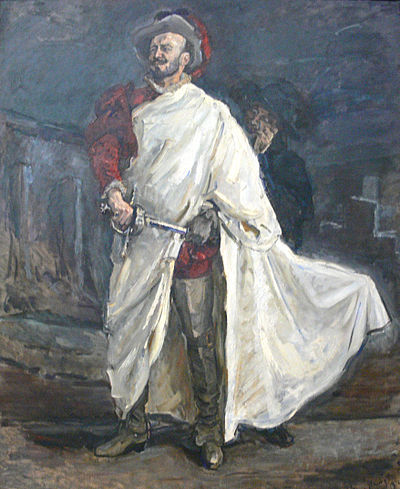
Don Juan is a Spanish archetype of a lascivious and libertine man, created by Tirso de Molina, a poet and religious playwright of the Middle Ages. His character was supposed to be an antagonist of what society considered to be moral and pure at that time. And as any other story, it has its adaptations.
Don Giovanni (the same as Don Juan) is the work of Mozart (composer) and Lorenzo Da Ponte (writer), where Don Giovanni is a scoundrel who seduces and abandons women; one of his victims has his father murdered by Don Giovanni after he tried to prevent the seduction. The spirit of the Commander (Donna Anna's father murdered by D. Giovanni) returns in the form of a statue and drags the protagonist to hell with the help of demons.
Erik, after Christine asks him to play Don Juan Triumphant, says: "Never ask me that. This Don Juan was not composed for the libretto of a Lorenzo Da Ponte, inspired by wine, by furtive loves and by vices finally punished by God. I can play Mozart if I so wish, which will bring beautiful tears to your eyes and inspire you with frank reflections. But my Don Juan burns, Christine, and not because he has been hit by heavenly fire!" (...) "You see, Christine, there is a song so terrible that it consumes all who approach it. You haven't reached it yet, and that's good, because you would lose your soft colors and they wouldn't recognize you anymore on your return to Paris" (...)
Erik says that his Don Juan "burns" and that Christine was in no condition to understand the somber depths of his masterpiece. He refuses to play Don Juan at first (although he is willing to play other Mozart pieces), but after being unmasked, he plays in a form of escapism. Christine is enthralled by the terrible, somber performance. Erik's Don Juan is a reflection of the pain he feels.
He apparently has no interest in writing a story like Don Giovanni, possibly an inspiration for him is Lord Byron's version, where Don Juan is neither a seducer nor a villain: but a victim of a cruel and false love of a woman. Erik says that it took him years to finish his work, as if each event in his life influenced the work more. He also says that, when finishing Don Juan Triumphant, he would die and be buried along with the scores: he changes his mind when he falls in love with Christine.

Don Juan is an archetype that contradicts everything Erik is and believes. Erik scares women by his ugliness / Don Juan seduces and conquers them all. Erik wants true love / Don Juan wants to deceive women in exchange for sex. Don Juan is a handsome, seductive man who is admired by people / Erik was born deformed and was abused, humiliated and rejected by (almost) everyone he met. Erik would probably change the character of Don Juan just as Lord Byron changed it according to his own life experience. That's why he is "Don Juan Triumphant", rather than the protagonist's defeat.
Christine's words after hearing Don Juan Triumphant: "His Don Juan Triumphant (for there was no longer any doubt that he had rushed his masterpiece to forget the horror of the present minute) appeared to me only one long, frightening, magnificent sob, where poor Erik had deposited all his misery." (...) "I remembered the notebook with red notes and easily imagined that that song had been written in blood. It guided me through all the details of martyrdom; it made me enter all the corners of the abyss, the inhabited abyss by the ugly man; it showed me Erik atrociously banging his poor, ugly head against the funereal walls of hell, where he had taken refuge so as not to frighten human eyes any longer, where Pain was deified, and then, the sounds that saw from the abyss and suddenly grouped together in a prodigious and threatening flight. the world. I understood that the work was finally done and that Ugliness, borne on the Wings of Love, had dared to look Beauty in the face!" (...)
For me, Erik's Don Juan is an expression of his life and inner demons. The rejection, the suffering, the pain, the hate, the jealousy, and at the same time, the love, the desire and the will to be loved like any other human being. Erik is as much compared with Death as with Sexuality. This duality would be expressed in his work. And since the work is Triumphant, in the end he would find the love and happiness he longed for.
Adaptations
youtube
In my opinion, Andrew Loyd Webber's "Don Juan Triumphant" doesn't make much sense because it only explores a carnal scandal between Don Juan and Aminta. It looks like the same character as Tirso de Molina and Lorenzo Da Ponte, not the alternative — painful and suffering — version of Erik. There is no tragedy, no hellfire and no suffering. It just seems like an empty work made to shock the society of the 19th century. "Oh but it's Erik's self insert", the original work was clearly an escapism, a reflection of his life, a form of expression of the pain he felt. It's not that Erik's work in the book doesn't explore the theme of sexuality, but that's not all. It's not just a horny show between Erik and Christine. Especially because it gives off a weird vibe that Erik just wanted sex with her, and that's a lie. I do love The Point of No Return by its beautiful melody and my E/C bullshit that likes some horny fanfiction.
I adore, however, the 1925s (or 1929s rebuilt) "Don Juan". Not only because it's the main theme scored by Gabriel Thibaudeau, but also because this specifically is the unmasking scene and it captures everything that I imagined as Leroux's description. The pain, the passion, the tragedy, is all there. Lon Chaney's Erik says to Christine that since the first time he saw her, he was inspired to write such a magnificent piece of music. Not 20 years writing it as originally, but more a romantic inspiration coming from his heart. This adaptation, to be fair, is my favorite.
youtube
And another version which I apreciate a lot is the 1989 slasher movie with Robert Englund. It's such a sublime song that remarks the exact 'Dark Romance' vibes of E/C relantionship. Obviously is not the best adaptation, actually it has little to do with the original work as Christine is a time traveler, Erik is a murderous psychopath villain and the story goes totally into a supernatural horror. But if you put in your mind that PotO and A Nightmare On Elm Street were merely an inspiration to a slasher/supernatural movie, it's actually an interesting experience.
youtube
So in conclusion, this was my analysis of the mysterious Don Juan Triumphant. Feel free to disagree or point out new things in the comments 🙏🏽❤️
#erik#the phantom of the opera#poto#gothic#gothic literature#gaston leroux#andrew lloyd webber#musical#broadway#lon chaney#poto 1925#the phantom of the opera 1925#silent movies#robert englund#don juan triumphant#the phantom of the opera 1989#erik destler
103 notes
·
View notes
Text
Queer Calendar 2023
We put together a calendar of key (mostly queer) dates at the start of the year to help us with scheduling - so I thought I’d share it around! Including pride and visibility days, some queer birthdays and anniversaries, and a few other bits and bobs. Click the links for more info - I dream one day of having a queer story for every day of the year!
This is obviously not an exhaustive list - if I’ve overlooked something important to you, feel free to add it in the reblogs!
January
3 - Bisexual American jazz-age heiress Henrietta Bingham born 1901
8 - Queer Australian bushranger Captain Moonlite born 1845; gay American art collector Ned Warren born 1860
11 - Pennsylvania celebrates Rosetta Tharpe Day in honour of bisexual musician Rosetta Tharpe
12 - Japanese lesbian author Nobuko Yoshiya born 1896
22 - Lunar New Year (Year of the Rabbit)
24 - Roman emperor Hadrian, famous for his relationship with Antinous, born 76CE; gay Prussian King Frederick the Great born 1712
27 - International Holocaust Remembrance Day
February
LGBT+ History Month (UK, Hungary)
Black History Month (USA and Canada)
1 - Feast of St Brigid, a saint especially important to Irish queer women
5 - Operation Soap, a police raid on gay bathhouses in Toronto, Canada, spurs massive protests, 1981
7 - National Black HIV/AIDS Awareness Day (USA)
18 - US Black lesbian writer and activist Audre Lorde born 1934
12 - National Freedom to Marry Day (USA)
19-25 - Aromantic Spectrum Awareness Week
March
Women’s History Month
1 - Black Women in Jazz and the Arts Day
8 - International Women’s Day
9 - Bi British writer David Garnett born 1892
12 - Bi Polish-Russian ballet dancer Vaslav Nijinsky born 1889 or 1890
13 March-15 April - Deaf History Month
14 - American lesbian bookseller and publisher Sylvia Beach born 1887
16 - French lesbian artist Rosa Bonheur born 1822
20 - Bi US musician Rosetta Tharpe born 1915
21 - World Poetry Day
24 - The Wachowski sisters’ cyberpunk trans allegory The Matrix premiers 1999
April
Jazz Appreciation Month
Black Women’s History Month
National Poetry Month (USA)
3 - British lesbian diarist Anne Lister born 1791
8 - Trans British racing driver and fighter pilot Roberta Cowell born 1918
9 - Bi Australia poet Lesbia Harford born 1891; Easter Sunday
10 - National Youth HIV & AIDS Awareness Day (USA)
14 - Day of Silence
15 - Queer Norwegian photographer and suffragist Marie Høeg born 1866
17 - Costa-Rican-Mexican lesbian singer Chavela Vargas born 1919
21-22 - Eid al-Fitr
25 - Gay English King Edward II born 1284
26 - Lesbian Day of Visibility; bi American blues singer Ma Rainey born 1886
29 - International Dance Day
30 - International Jazz Day
May
1 - Trans British doctor and Buddhist monk Michael Dillon born 1915
7 - International Family Equality Day
7 - Gay Russian composer Pyotr Tchaikovsky born 1840
15 - Australian drag road-trip comedy The Adventures of Priscilla, Queen of the Desert premiers in 1994
17 - IDAHOBIT (International Day Against Homophobia, Biphobia, Intersexism and Transphobia)
18 - International Museum Day
19 - Agender Pride Day
22 - US lesbian tailor and poet Charity Bryant born 1777
22 - Harvey Milk Day marks the birth of gay US politician Harvey Milk 1930
23 - Premier of Pride, telling the story of the 1980s British activist group Lesbians and Gays Support the Miners
24 - Pansexual and Panromantic Awareness and Visibility Day; Queer Chinese-Japanese spy Kawashima Yoshiko born 1907
26 - queer American astronaut Sally Ride born 1951
29 - Taiwanese lesbian writer Qiu Miaojin born 1969
June
Pride Month
Indigenous History Month (Canada)
3 - Bisexual American-French performer, activist and WWII spy Josephine Baker born 1906
5 - Queer Spanish playwright and poet Federico García Lorca born 1898; bi English economic John Maynard Keynes born 1883
8 - Mechanic and founder of Australia’s first all-female garage, Alice Anderson, born 1897
10 - Bisexual Israeli poet Yona Wallach born 1944
12 - Pulse Night of Remembrance, commemorating the 2012 shooting at the Pulse nightclub, Orlando
14 - Australian activists found the Gay and Lesbian Kingdom of the Coral Sea Islands in 2004
18 - Sally Ride becomes the first know queer woman in space
24 - The first Sydney Mardi Gras 1978
25 - The rainbow flag first flown as a queer symbol in 1978
28 - Stonewall Riots, 1969
28 June-2 July - Eid al-Adha
30 - Gay German-Israeli activist, WWII resistance member and Holocaust survivor Gad Beck born 1923
July
1 - Gay Dutch WWII resistance fighter Willem Arondeus killed - his last words were “Tell the people homosexuals are no cowards”
2-9 - NAIDOC Week (Australia) celebrating Aboriginal and Torres Strait Islander culture
6 - Bi Mexican artist Frida Kahlo born 1907
12 or 13 - Roman emperor Julius Caesar born c.100BCE
14 - International Non-Binary People’s Day
23 - Shelly Bauman, owner of Seattle gay club Shelly’s Leg, born 1947; American lesbian cetenarian Ruth Ellis born 1899; gay American professor, tattooist and sex researcher Sam Steward born 1909
25 - Italian-Australian trans man Harry Crawford born 1875
August
8 - International Cat Day
9 - Queer Finnish artist, author and creator of Moomins Tove Jansson born 1914
9 - International Day of the World's Indigenous Peoples
11 - Russian lesbian poet Sofya Parnok born 1885
12 - Queer American blues musician Gladys Bentley born 1907
13 - International Left-Handers Day
22 - Gay WWII Dutch resistance fight Willem Arondeus born 1894
24 - Trans American drag queen and activist Marsha P Johnson born 1945
26 - National Dog Day
30 - Bi British author Mary Shelley 1797
31 - Wear it Purple Day (Australia - queer youth awareness)
September
5 - Frontman of Queen Freddie Mercury born 1946
6 - Trans Scottish doctor and farmer Ewan Forbes born 1912
13 - 1990 documentary on New York’s ball culture Paris is Burning premiers
15-17 - Rosh Hashanah
16-23 - Bisexual Awareness Week
17 - Gay Prussian-American Inspector General of the US Army Baron von Steuben born 1730
23 - Celebrate Bisexuality Day
24 - Gay Australian artist William Dobell born 1889
30 - International Podcast Day
October
Black History Month (Europe)
4 - World Animal Day
5 - National Poetry Day (UK)
5 - Queer French diplomat and spy the Chevalière d’Éon born 1728
8 - International Lesbian Day
9 - Indigenous Peoples’ Day (USA)
11 - National Coming Out Day
16 - Irish writer Oscar Wilde born 1854
18 - International Pronouns Day
22-28 - Asexual Awareness Week
26 - Intersex Awareness Day
31 - American lesbian tailor Sylvia Drake born 1784
November
8 - Intersex Day of Remembrance
12 - Diwali; Queer Mexican nun Sor Juana Inés de la Cruz born c.1648
13-19 - Transgender Awareness Week
20 - Trans American writer, lawyer, activist and priest Pauli Murray born 1910; Transgender Day of Remembrance
27 - Antinous, lover of the Roman emperor Hadrian, born c.111; German lesbian drama Mädchen in Uniform premiers, 1931
29 - Queer American writer Louisa May Alcott born 1832
December
AIDS Awareness Month
1 - World AIDS Day
2 - International Day for the Abolition of Slavery
3 - International Day of Persons with Disabilities
8 - Pansexual Pride Day; queer Swedish monarch Christina of Sweden born 1626
10 - Lesbians and Gays Support the Miners host Pits and Perverts concern to raise mining for striking Welsh miners, 1984
14 - World Monkey Day
15 - Roman emperor Nero born 37CE
24 - American drag king and bouncer Stormé DeLarverie born 1920
25 - Christmas
29 - Trans American jazz musician Billy Tipton born 1914
#calendar#queer calendar#queer observances#pride days#queer history#lgbt#lgbtq#lgbt history#gay history#trans history#queer#gay#trans#lesbian#lesbian history
252 notes
·
View notes
Text
Shout-out to the unknown author of The Spanish War, which covers the final stretch of Caesar's civil war:
Wrote what many classicists have called "the worst book in Latin literature" with language that's "deplorable and often unintelligible" (T. Rice Holmes).
Native Latin speaker; text is full of Latin grammar errors.
When we can tell what he's talking about it's usually the weather, topography, or pointless cavalry skirmishes.
He somehow fails to mention that this campaign ended a civil war.
The only reason we know he existed is because his writing is so uniquely bad it can't be mistaken for anyone else's.
However! He's doing his best!! It's very likely that he was a centurion or other low-ranking officer with no formal education, which would make this one of the few surviving works from this time period not produced by the upper classes!
We can deduce some details about his personality, like his love of theater (his favorite playwright is Ennius), his personal interest in cavalry maneuvers, that he also served in the African campaign, and that he's a diehard Caesarian.
His language choices also give us clues about how Roman propaganda and political factions changed over this period!
#I do NOT recommend reading this book but i'm glad it exists#de bello hispaniensi#just roman memes#caesar's civil war#jlrrt speaks#the spanish war#jlrrt essays
65 notes
·
View notes
Note
Have you decided what your fav characters’ favorite plays are?
NO I'M TOO OVERWHELMED LMAO HELP!! Okay but here are some thoughts about what sort of theatre I think they enjoy:
Lestat: Obviously since he got his start doing commedia dell'arte I think he'll always have a soft spot in his heart for those old comedies. (Honestly, I think Lestat is one of the only vampires who enjoys "lowbrow" comedy and I love that for him.) The style of traveling street theatre Lestat would've been performing during his time as Lelio was largely improvisational, and though it moved into a more scripted form over time, I think Lestat is an improv queen. I also get all giddy and happy thinking about his reaction to the fact that commedia dell'arte is still performed today! Like, I did a production of Servant of Two Masters in college lmfao it's still viewed as one of the foundational tenants of theatre to this day and I think that would really tickle him.
He's also a Shakespeare fan but historically speaking we know Lestat would've had to have read French translations which of course weren't impossible to come by, but given all of Lestat's circumstances in his early life (poor, uneducated, etc) it's definitely worth noting that he would've had to have worked hard to get at Shakespeare. I think it's so funny that his favorite play in canon is Macbeth and that he sees himself as Macbeth, whereas Louis and Claudia totally saw him as Lady Macbeth (which is why I wrote a lil ficlet about it LOL)
Okay LASTLY I also just want to say I think Lestat loves loves LOOOOVE restoration comedy and the comedy of manners that was a little before his time but just really focused on like. Outrageous comedy and satire. Lestat likes to laugh, okay!! He loves Moliere just as much as he loves Shakespeare! Tartuffe and She Stoops to Conquer are definitely plays he can quote by heart.
Armand: Shakespeare, yes, but very specifically: Jacobean Revenge Tragedies. These were a lot darker, a lot more hardcore and angsty (as the title suggests!). One day I'll have to get Armandblr's input for some meta and psychological background as to why Armand would be obsessed with plays where the protagonist is wronged so egregiously that they go down a path of murder and (gruesome, often cannibalistic) bloodshed and rage-induced hysteria that ultimately ends in their own demise. But for now I'll just say that I feel it in my bones. I think he staged The Spanish Tragedy at least a few times at the Theatre des Vampires.
Also I think he'd definitely be into theatre of the absurd, especially in his Devil's Minion era! He goes through phases where he really leans into the existentialism and finds it amusing and thought-provoking, but sometimes it also majorly fucks him up (similar to Lestat)
Louis: He's a Romantic at heart, and certainly he loves the classics, but we've already been over Shakespeare so I'll say that I also think Louis has a soft spot for the American canon. Think Tennessee Williams, Arthur Miller, Eugene O'Neill, etc. He's a modernist girlie, and I think those plays would be a good guiding light into understanding modern America for Louis. I think Louis often sees middle class America as a fascinating subject to study (rather than, like, a reality that real people live), and I think modernist plays are really good at toe-ing the line of like, being deeply humanizing and beautiful and tragic if done right, and also still being somewhat performative and maybe even a bit artificial and contained behind a fourth wall. I think that dichotomy would be fascinating to Louis. His favorites would be A View from the Bridge and Cat on a Hot Tin Roof.
Marius: Unfortunately there are like 0 Roman tragedies that survived in writing, but we know that they existed and were actually slightly different than Greek tragedies in that the characters actually voiced more of their internal psychological conflict, and also apparently the playwrights were influenced by the development of new rhetorical theory, so a lot of the writing incorporated like public persuasion. So I do think Marius would've been into those but listen I also happen to know for a fact that Marius' favorite play is Shakespeare's Coriolanus. He told me himself. I just read over the wiki synopsis to refresh my memory and I'm losing my mind over this line: "The two tribunes condemn Coriolanus as a traitor for his words and order him to be banished. Coriolanus retorts that it is he who banishes Rome from his presence." like PLEASE that's so petty I love it. Real talk though Marius loves a good political drama and look I know I've brought up Shakespeare a lot in this post already but no one is doing it like him, especially with the Romans!!
Daniel: he's a theatre of the absurd queen <3
#side note: i actually feel terrible posting this because there's nothing CONTEMPORARY but. i'm a classics girlie i'm sorry.#i literally work at a NEW WORKS THEATRE COMPANY we only produce CONTEMPORARY ART but i'm so bad at reading new shit#i get overwhelmed by it lmfao theatre history is so much easier for me#anyway PHEW thanks for asking this <3#;answered#vampire meta#lestat de lioncourt#louis de pointe du lac#marius de romanus#armand#daniel molloy#headcanons
20 notes
·
View notes
Note
“Too bad they don’t have Kings who were exiled or Queens who were accused of having affairs with their brother in laws.”
“The disgraced former king of Spain has been told to stay away from a new play about his life, with the country’s top playwright warning he would find it “extremely uncomfortable”.
The play, which opened to rave reviews in Madrid this week, depicts Juan Carlos as a pathetic figure trying to make a paella on board a yacht in the Persian Gulf and shows him groping women’s bottoms, shooting a dolphin and receiving a briefcase stuffed with cash from an unnamed Arab benefactor.”
Both the Telegraph and the times seem to have an article.
But somehow making up stories about Kate being a coma is more important for the Spanish media
22 notes
·
View notes
Text
THIS DAY IN GAY HISTORY
based on: The White Crane Institute's 'Gay Wisdom', Gay Birthdays, Gay For Today, Famous GLBT, glbt-Gay Encylopedia, Today in Gay History, Wikipedia, and more … February 25




1937 – Severo Sarduy, born in Camagüey, Cuba (d.1993) was a Cuban poet, author, playwright, and critic of Cuban literature and art.
He went to Havana in the mid-1950s to study medicine. Though he did not finish his studies, he retained a lifelong interest in science. While living in the capital he pursued his vocation for poetry and painting and came into contact with older writers such as José Rodríguez Feo and José Lezama Lima.
With the advent of the revolution in 1959, Sarduy became one of a group of young writers given the task of renewing Cuban literature. Sent to Paris by the government in 1960 to study art at the École du Louvre, Sarduy decided not to return to Cuba when his scholarship ran out a year later. Disaffected with Castro's regime and fearful of its persecution of homosexuals and the censorship imposed on writers, Sarduy never went home.
In Paris, he was connected to the group of intellectuals who produced the magazine Tel Quel, particularly to philosopher François Wahl, with whom he was openly involved.
Sarduy worked as a reader for Editions du Seuil and as editor and producer of the Radiodiffusion-Télévision Française.
In 1972 his novel Cobra won him the Medici Prize. He was among the most brilliant essayists writing in Spanish and "a powerful baroque narrator, full of surprising resources.".
As a poet, he was considered one of the greatest of his time. He was also a more or less secret painter; a major retrospective of his work was held at the Reina Sofía Museum of Madrid after his death. He died due to complications from AIDS just after finishing his autobiographical work Los pájaros de la playa.
Sarduy's posthumous Pájaros de la playa (1993; "Beach Fowl") is about a sanatorium for sufferers of AIDS, the disease that killed the author.


1942 – John Saul is an American author of suspense and horror novels. Most of his books have appeared on the New York Times Best Seller List.
Born in Pasadena, Saul grew up in Whittier, California. He went on to several colleges, variously majoring in anthropology, liberal arts and theater, but never obtained a degree. After leaving college, Saul decided to become a writer, and spent fifteen years working in various jobs while trying to improve his craft.
Prior to the start of his bestselling thriller career Saul had around ten books published under pen names, the first of which he wrote in one weekend after unexpectedly losing his job. His first book sale earned him just $200. Today he has over 60 million books in print.
In 1976, Dell Publishing contacted him and asked if he'd be interested in writing a psychological thriller. The resulting novel, Suffer the Children, appeared on all the bestseller lists in the United States and reached the number one spot in Canada. Cry for the Strangers was made into a film of the same name in 1982.
In addition to his novels, Saul has had several one-act plays produced in both Los Angeles and Seattle.
Saul lives part-time in the Pacific Northwest, both in Seattle and in the San Juan Islands, and has a residence on the Big Island of Hawaii. Saul is openly gay. He lives with his partner of 32 years, who has collaborated on several of his novels. He is a frequent speaker at the Maui Writers' Conference.


1947 – Jorge Donn was an internationally-known ballet dancer. (d.1992) He was best known for his work with the Maurice Béjart's Ballet company, and his participation as lead dancer in Claude Lelouch's film Les Uns et les Autres.
Jorge Donn was born in Buenos Aires, Argentina. He began to dance when he was 4 or 5 years old, then studied at the Colon Theatre school. In 1963, he arrived in Brussels to work in the Maurice Béjart company and soon became its principal dancer, entering into a twenty-year professional and personal relationship with Béjart.
Many of Béjart's works were created expressly for him: Bhakti (1968), Nijinsky, Clown of God (1971), Golestan, or The garden of roses (1973), Ce que l'amour me dit (1974), Notre Faust (1975), Léda (1978), Adagietto (1981) and others.
In 1976, Jorge Donn became artistic director of the Béjart's Ballet of the Twentieth Century company. In 1988, he founded his own company, L'Europa Ballet, which existed for a short time.
Jorge Donn died of AIDS on 30th November 1992 in Lausanne. Many choreographers created ballets as a tribute to him: Maurice Béjart (Ballet for Life), Denys Ganio (Tango... a rose for Jorge Donn), Carolyn Carlson (Homage for Jorge Donn), Grazia Galante (Masticando Sueños)


1950 – The Irish director Neil Jordan was born today. An Academy award-winning Irish filmmaker and novelist. He received the Academy Award for The Crying Game. As a writer/director, Jordan has a highly idiosyncratic body of work, ranging from mainstream hits like Interview With the Vampire to commercial failures like We're No Angels to a variety of more personal, low-budget art-house pictures.
Although in a conventional heterosexual marriage, unconventional sexual relationships are a recurring theme in this gay-friendly director's work, and he often finds a sympathetic side to characters audiences would traditionally consider deviant or downright horrifying. His film The Miracle, for instance, followed two characters who struggled to resist a strong, incestuous attraction, while The Crying Game made complicated, likable characters out of an IRA terrorist and a Transgendered woman. Vampire, like the Anne Rice book it was based on, focused on the intense sexual relationship of two undead men who murder humans nightly (although the pair never have sex, they are clearly lovers of a sort), accompanied by an equally lusty vampire woman who is eternally trapped in the body of a little girl. While Lestat (Tom Cruise) is depicted in an attractive but villainous manner, his lover Louis (Brad Pitt) and the child vampire Claudia (Kirsten Dunst) are meant to capture the audience's sympathy despite their predatory nature.


1953 – Garrett Glaser is a retired news reporter who was one of the first US television journalists to "come out" publicly as a homosexual.
His coming out occurred during the course of a speech he made before a large group of TV and radio executives at the 1992 convention of the Radio/TV News Directors Association being held in San Antonio, Texas. Although Glaser co-founded the Electronic Media Task Force of the National Lesbian/Gay Journalists Association (NLGJA) in 1990 and was later out, as well, to fellow journalists, he was not out to the public at large. That changed in 1994, when Glaser disclosed his sexual orientation during a live report on the "Channel 4 News" at KNBC-TV Los Angeles as he was reporting on the death of Elizabeth Glaser (no relation), an AIDS activist who founded the Pediatric AIDS Foundation.
Several weeks later, the Los Angeles Times published a story on the front page of its "Calendar" section about Glaser's status as one of the nation's few openly gay TV reporters.

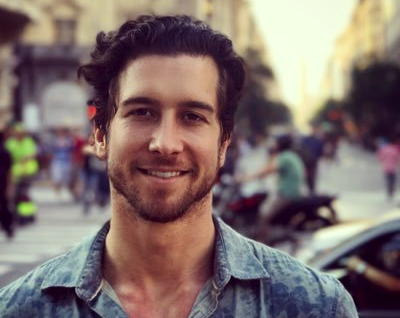
1989 – Evan Todd is an American actor and producer.
Todd grew up in Kissimmee, Florida. He finished his senior year of high school at the North Carolina School of the Arts in Winston-Salem and later graduated from the Juilliard School. Todd also studied at Yale School of Drama and London Academy of Music and Dramatic Art.
In 2007, Todd made his big screen debut as a student in the 2007 film Sydney White. He subsequently appeared in several television films and series such as Grumpy Cat's Worst Christmas Ever (2014), Switched at Birth and Jane the Virgin. In 2014, he originated the role of Kurt Kelly in Heathers: The Musical, when the rock musical had a production Off-Broadway. The following year, Todd co-produced the 2015 Broadway revival of Spring Awakening. A critical success, the rock musical, based on the German play Spring Awakening (1891) by Frank Wedekind, was nominated for both a Tony Award and a Drama Desk Award for Outstanding Revival of a Musical.
In 2016, Todd had a leading role in the comedy film 4th Man Out about a young mechanic who comes out to his straight buddies and to his family. The film received the Audience Choice Award for Best Dramatic Feature at Outfest, and was awarded the Audience Award for Best Narrative Feature at the InsideOut LGBT Film Festival. In March 2017, Todd joined the Broadway cast of Beautiful: The Carole King Musical as King’s songwriter first husband and writing partner Gerry Goffin.
Todd is openly gay. He is the co-founder of stART and artsINSIDEOUT, two summer arts empowerment programs benefiting students from his home town as well as children affected by HIV in South Africa.


2000 – On this date Henry Stuart Matis walked up to the steps of a Mormon church in Los Altos with a note reading "Do not resuscitate" pinned to his shirt, and shot himself.
He was a 32-year-old Gay man and devoted member of the The Church of Jesus Christ of Latter-day Saints, and after a lifetime spent struggling to reconcile the two, explained in a suicide note that "for the first time in over 20 years, I am free from my pains."
"As I believed that I was a Christian, I believed that I could never be Gay," he wrote. "Perhaps my death ... might become the catalyst for much good ... Your actions might help to save many young people's lives."
In the early morning, on the 10th anniversary of Matis' death, a group of local Mormons and others held a memorial vigil for Matis in Los Altos. Starting at Cuesta Park with songs and brief speeches, about 20 people then walked up Grant Road, carrying roses and candles. They ended up on the sidewalk in front of the LDS stake center on Grant Road in Los Altos, where they set up a small memorial display with an image of Matis' tombstone and stories about him and other Gay Mormons who have committed suicide.
Matis' body was found at the center, which serves as the headquarters for South Bay Mormon congregations, at about 7:30 a.m. on Feb. 25, 2000. Robert Rees of the Santa Cruz stake, who served as a spiritual adviser to Matis, said the event was meant "to honor a good man who eft life much earlier than he should have, whose passing was tragic but whose message was one of hope to other people." According to a statement on its Web site, the Mormon church believes that acting on "same-gender attraction" is a sin and Gay church members must remain celibate.
George Cole, a San Francisco resident who is Gay and serves on the executive committee of Affirmation, a support and advocacy group for Gay and Lesbian current and former Mormons, said he didn't know Matis personally but has "lost too many very good friends to suicide. "I know what it is like to seriously consider taking your life," he said. Cole said he left the Mormon church in 2002.
"I chose happiness and fulfillment at the cost of not having the church in my own life," he said. Matis died just a couple of weeks before Proposition 22, the anti-Gay marriage measure in 2000 that preceded 2008's Proposition 8, went before voters, and his death was often portrayed as a political statement, though Matis did not mention the initiative in his suicide note.

2007 – On this date the 79th Academy Awards were hosted by Ellen DeGeneres in Hollywood.



16 notes
·
View notes
Photo

Antonio Gala (deceased)
Gender: Male
Sexuality: Bisexual
DOB: 2 October 1930
RIP: 28 May 2023
Ethnicity: White - Spanish
Occupation: Poet, playwright, writer
#Antonio Gala#lgbt history#bisexuality#lgbt#lgbtq#male#bisexual#1930#rip#historical#white#spanish#poet#playwright#writer
60 notes
·
View notes
Photo
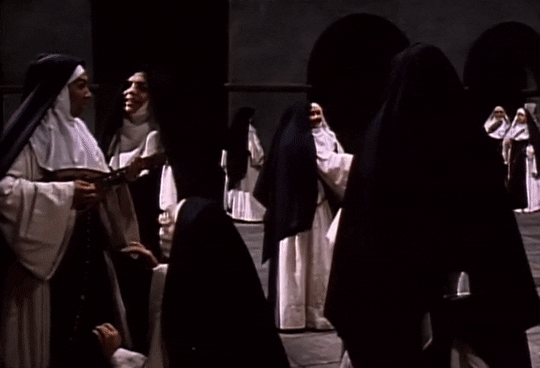








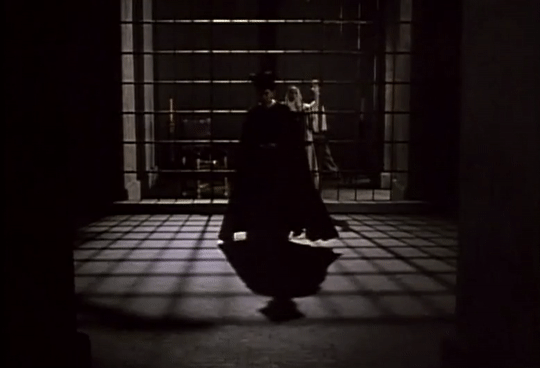
YO, LA PEOR DE TODAS (1990)
dir. María Luisa Bemberg
An examination on the life of Sor Juana Inés de la Cruz, a Roman Catholic nun from Mexico City who, in the midst of the Spanish Inquisition, established herself as an important New World philosopher, poet, playwright and early feminist. When Sor Juana comes under the scrutiny of a vicious archbishop for her unconventional ways, she must appeal to a powerful political connection - the Viceroy's scholarly wife.
(link in title)
#lgbt cinema#lesbian cinema#yo la peor de todas#i the worst of all#argentinian cinema#lgbt#argentina#lesbian#bisexual#lgbt movie#lesbian movies#argentinian movies#lgbt film#lesbian film#argentinian film#lgbt media#lesbian media#queer cinema#latin american cinema#latin cinema#maría luisa bemberg#assumpta serna#dominique sanda#1990#90s#1990s#90s movies#90s cinema#90s films#1990s movies
66 notes
·
View notes
Text
Update No. 2
It’s day 11 and I’m at 27,377 words. I feel infinitely better about this version of the play than the previous one, but I’m still using it as a general guide and there are a couple monologues later on that I’m quite attached to.
I haven’t written yet today, but that’s because lazy mornings after a writeathon are a must and since I was on deadline for a short story – that has thankfully at the…
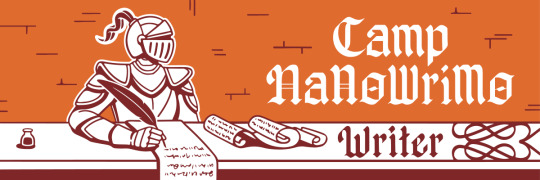
View On WordPress
#Atahualpa#Atawallpa#Camp NaNoWriMo#Conquistador#Ecuador#Francisco Pizarro#Historical Fiction#History#Incan Empire#Latin American History#Machu Picchu#NaNo Projects#NaNoWriMo#Peru#Plays#Playwrighting#Spanish History#Writeathons#Writing#Writing Challenges#Writing Community
0 notes
Text
James Shapiro: I realized I knew almost nothing that I needed to know about a playwright who was so engaged with the social and the economic and the political crises of his time. And it set me in motion.
I’ll give one tiny bit from Hamlet simply because it comes to mind. And that is the opening scene when men are preparing against invasion.
And it’s a scene often enough cut in productions of the play. But if you were in England in 1599, in the summer of 1599, anticipating another Spanish armada landing on the shores, an opening scene in which men are standing guard against invasion would have been extremely, extremely real and vivid. So, yes, that is not set in England. The play is set in Scandinavia in a different time as well.
But that’s the kind of thing that Shakespeare would do to give an edge to his plays
---
James Shapiro: When Shakespeare came to London, there was a play called Hamlet on the boards, and we hear traces of it as late as 1596, when the play’s being performed and this play is now lost. They call it the murder Hamlet or earlier Hamlet.
And you can imagine Shakespeare as a young actor watching this play. Maybe he’s standing as a messenger in his first role. And we don’t know. Thinking, I can do something with this. This play is stale. It’s past sell by date. Why don’t I put into Hamlet‘s mouth soliloquies, long speeches in which he reveals what he’s thinking and how he’s thinking.
And you can start to see Shakespeare, who didn’t really like creating plots. He liked doing court renovations on somebody else’s story that needed fixing up. And he had a brilliant facility for how to transform a work that had been popular and make it ever more so. And it’s extraordinary what he does.
45 notes
·
View notes
Photo

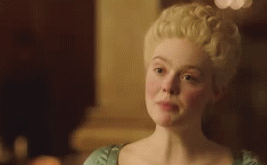

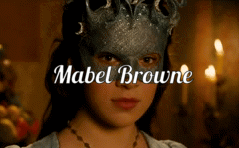


“These now serve one noble Queen,
But if power were in me,
For beauty, praise and virtues sake,
Each one a Queen should be.”
- The Praise of Eight Ladies of Queen Mary’s* court, by Richard Edwards
YOUNG LADIES OF MARY I’S COURT
JANE DORMER - Born in 1537, Jane Dormer was childhood playmates with King Edward VI. Jane joined Mary’s service prior to her accession, and upon becoming queen in 1553 became her closest maid, sleeping in her bedchamber with her, carving the queen’s meat and looking after the crown jewels. Mary was reluctant to let her marry, claiming there was no one worthy enough for her.
Jane was described in a poem by courtier playwright Richard Edwards as “a darling, and of such lively hue, that who so feeds his eyes on her, may soon her beauty rue.”
She eventually married Gomez Suarez, Duke of Feria, a close friend of Philip II of Spain in 1559, and moved to Spain later that year while pregnant with their first child. In Spain, Jane would maintain contact with Roman Catholics in England, and was seen as a champion of exiled English in Elizabeth’s reign; she also corresponded with four different Popes. After her husband’s death she took control of his estates, and was a candidate to take up the governorship of Flanders in the 1590′s.
MABEL BROWNE - Born in 1538, Mabel joined Mary’s household sometime prior to 1552. Due to her long standing service, Queen Mary attended Mabel’s wedding hosted in the Chapel Royal on 28th May 1554; according to historian Mary Everett Green, Mabel first met her husband Gerald Fitzgerald, 11th Earl of Kildare, at a masked ball. Shortly after the pair left for Ireland, where Mabel kept several priests in her household including a private chaplain named Nicholas Eustace. Nicholas was a relation of the Elizabethan rebel James Eustace, who mustered an Irish army with the help of Spanish troops to depose Queen Elizabeth; when this failed he fled to Spain. Mabel’s husband would be arrested in the Tower of London for years under suspicion of treason, which Mabel avoided despite keeping in touch with Jane Dormer.
MAGDALEN DACRE - Born in 1538, Magdalen Dacre was described by historian Sharon Turner as having been blonde, pretty and very tall; she allegedly stood a head above the other maids at court. According to contemporary biographer Richard Smith, one day Magdalen was washing her face when Queen Mary’s husband Philip II of Spain “playfully reached in”. She then picked up a staff and “strongly stroke the King on the arm”.
Like Jane Dormer, she was one of the maids mentioned in Richard Edward’s poem, where she was described as “not dangerous, her talk is nothing coy, her noble stature may compare to Helen of Troy.”
On 15th July 1558, Magdalen married Anthony Browne, close friend of Queen Mary and former Master of the Horse to Philip. The ceremony took place at Saint James’s Palace and the queen was in attendance. During Elizabeth’s reign Magdalen kept an illegal chapel for 120 worshippers, and her home became locally known as “Little Rome”. She supposedly wore a coarse linen smock beneath her court dresses, and was once accused of recusancy. Despite this, Queen Elizabeth visited her and her husband at Cowdray Castle in 1591, where the priests were kept well hidden.
*the poem is titled Queen Elizabeth’s ladies, but all the women mentioned served Mary and not her sister
#i've had this in my drafts for years lol#anyway if no one's making content i'll make it myself!#mary tudor#mary i#tudor#history
48 notes
·
View notes
Photo
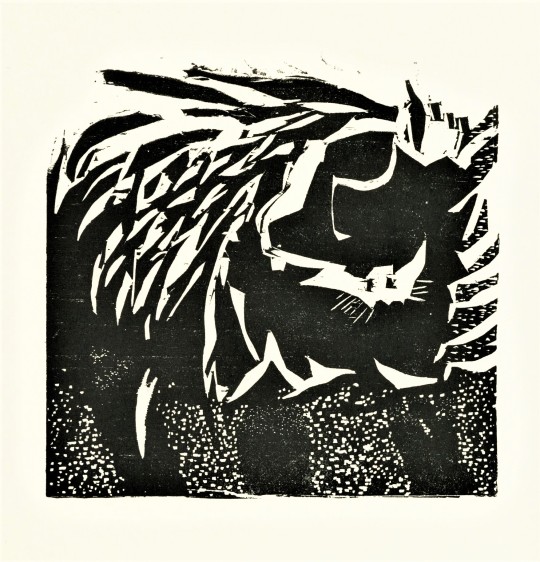
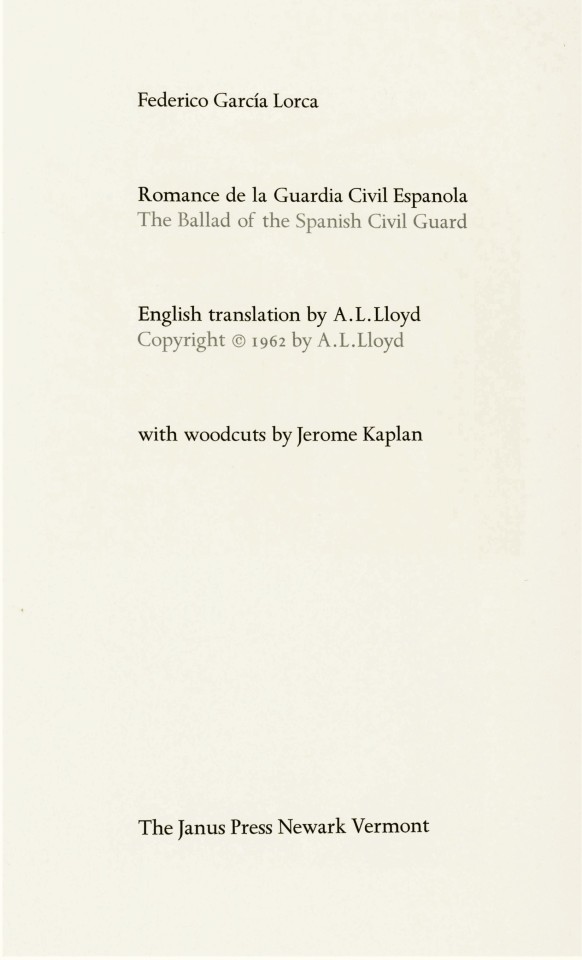
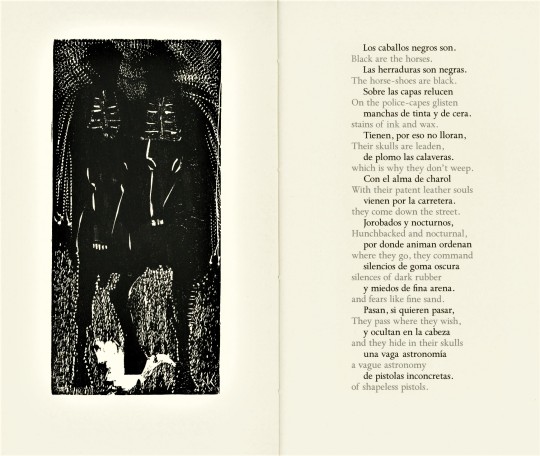
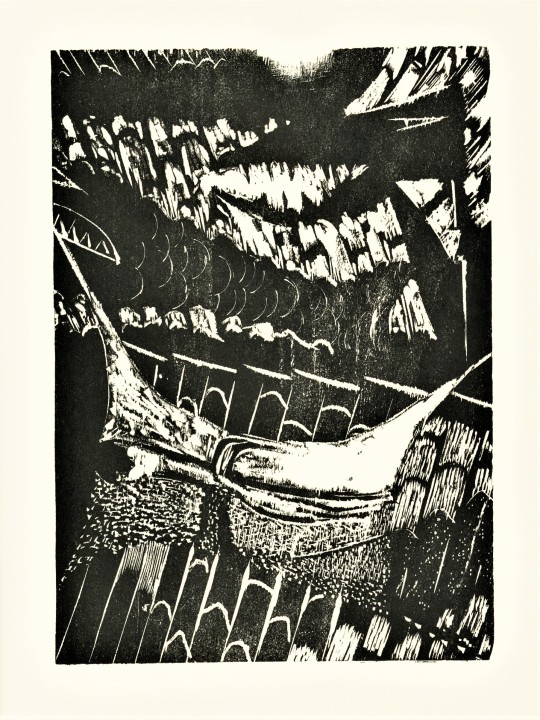
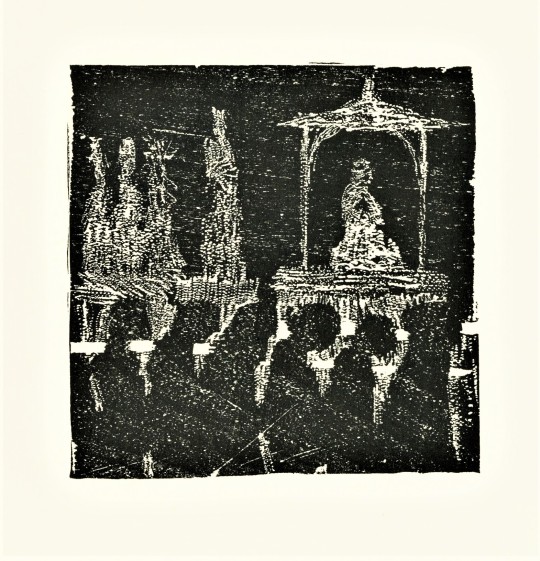
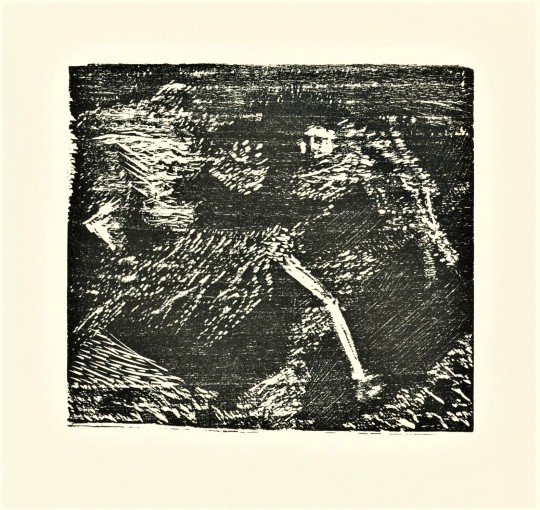
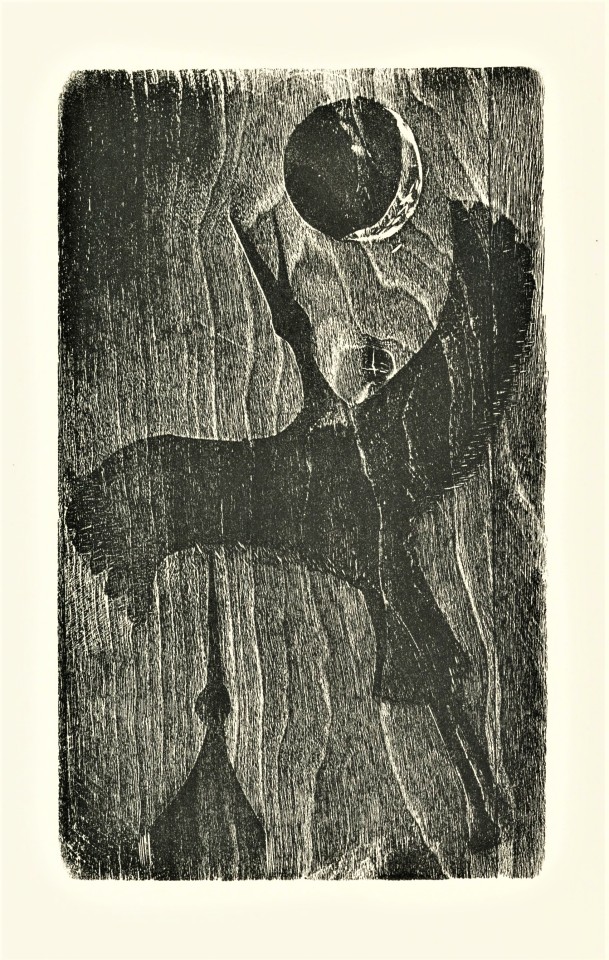


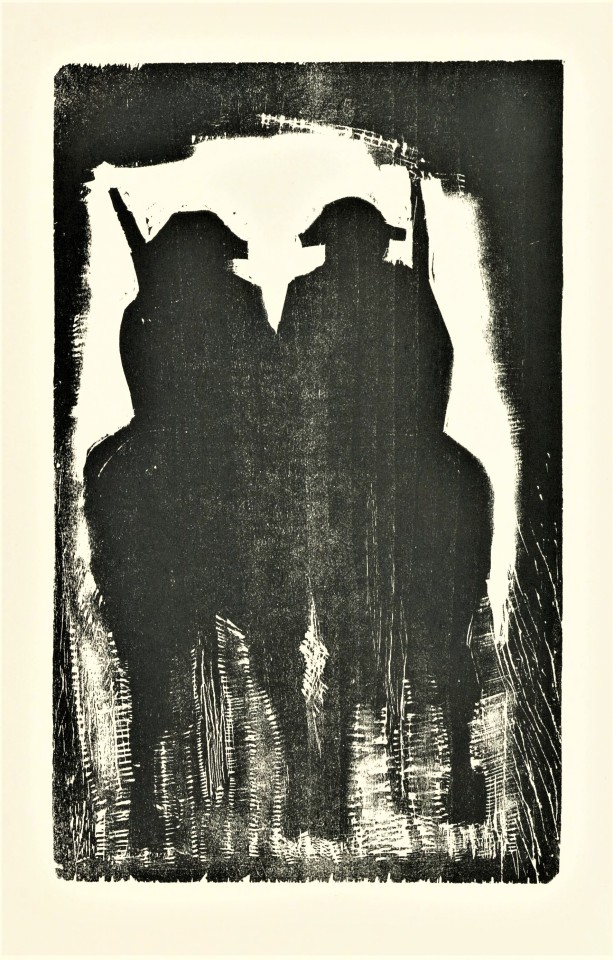
Staff Pick of the Week
Sometimes while pulling books for a class something will catch my eye. This book Romance de la Guardia Civil Espanola or The Ballad of the Spanish Civil Guard, by Spanish poet and playwright, Federico García Lorca, published by The Janus Press, Newark, Vermont, 1974, was pulled for a upper level Spanish course. The woodcuts by American printmaker, Jerome Kaplan (1920-1997) are what caught my eye.
As an artist-printmaker I am drawn to prints that embrace the qualities of the matrix. I see Kaplans woodcuts as a celebration of the medium. He does not overpower the wood and force it to be something that it is not; the grain of the wood and the mark of the gouge are embraced. These woodcuts powerfully express the sorrow and drama of the conflict in the poem and the poems’ nocturnal motif.
This book was designed and printed by Clair Van Vliet at her Janus Press. The type was set in 18 point Monotype Spectrum by Nancy Boylen and printed on Mohawk Superfine Vellum paper in an edition of 300 copies, and bound by Jim Bicknell. The edition is signed by the artist and our copy has a signed presentation inscription from Claire Van Vliet to our friend and benefactor Jerry Buff, who donated this book to us from his extensive collection.
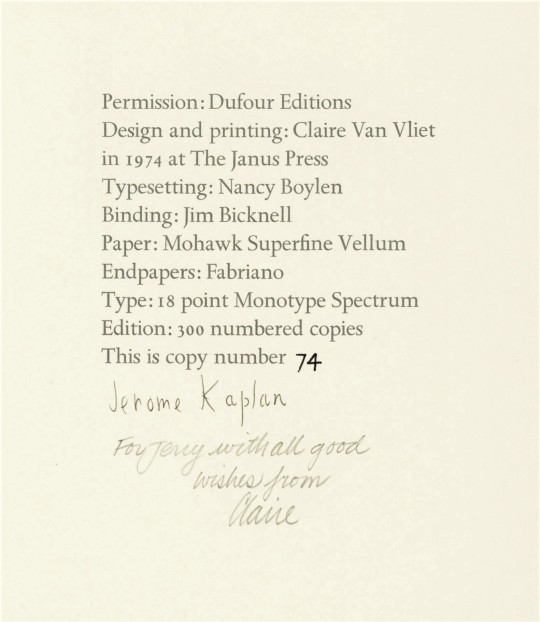
View more works printed by Claire Van Vliet at her Janus Press.
View more Staff Picks.
-- Teddy, Special Collections Graduate Intern.
#staff pick of the week#Janus Press#Claire Van Vliet#Jerome Kaplan#The Ballad of the Spanish Civil Guard#Romance de la Guardia Civil Espanola#A.L. Lloyd#Federico Garcia Lorca#Printmaking#Woodcut#Letterpress#Spanish Poetry#Monotype Spectrum#fine press books#Teddy
59 notes
·
View notes